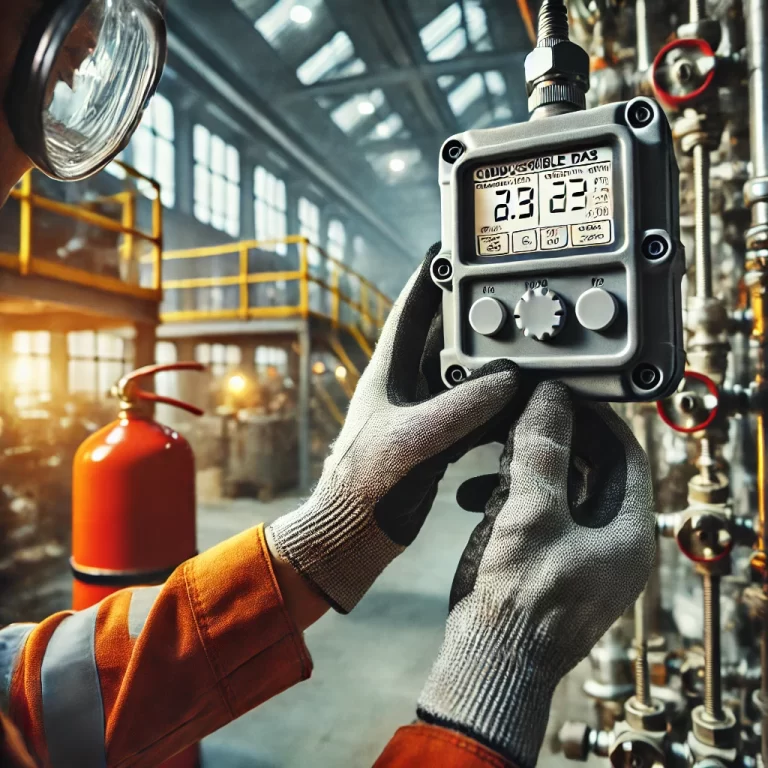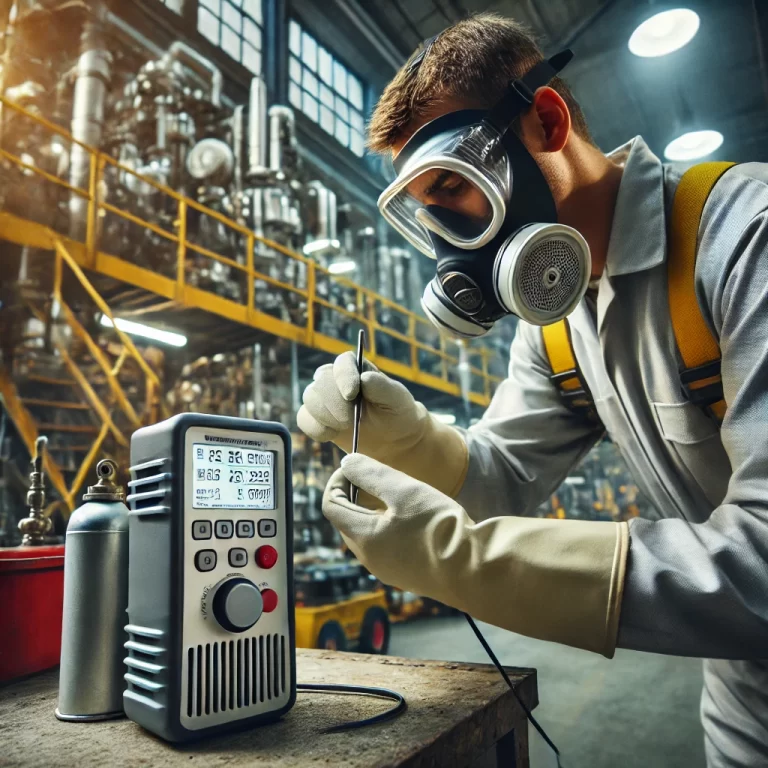Combustible gas detectors are crucial devices used to monitor the presence of flammable gases in various environments, from industrial settings to residential spaces. These detectors help prevent hazardous situations, such as explosions or fires, by alerting users to the presence of dangerous gas levels. However, for these devices to function optimally, regular calibration and maintenance are essential. In this article, we will explore why combustible gas detectors need to be regularly calibrated and tested, the risks of neglecting this maintenance, and best practices for ensuring these devices remain reliable.
Why Regular Calibration and Testing Are Necessary
Accuracy Decreases Over Time Gas detectors, like all electronic devices, are subject to wear and tear over time. The sensors inside combustible gas detectors can degrade due to prolonged exposure to gases, temperature fluctuations, humidity, and dust. Even minor degradation can affect the sensor’s ability to detect gas concentrations accurately. Regular calibration ensures the detector remains accurate and reliable in its readings. Calibration adjusts the sensor to maintain its sensitivity to specific gases, restoring it to the manufacturer’s specifications.
Environmental Factors The performance of gas detectors can be influenced by environmental conditions, such as extreme temperatures, high humidity, or airborne contaminants. For instance, high levels of dust or chemicals in the air may coat the sensor, interfering with its ability to detect gas properly. Regular checks and calibrations help mitigate the effects of environmental factors, ensuring the device continues to provide accurate and timely alerts.
Safety Considerations The primary function of a combustible gas detector is to ensure the safety of individuals by alerting them to potentially hazardous gas concentrations. An inaccurate or malfunctioning detector could fail to sound an alarm in the event of a dangerous leak, leading to catastrophic consequences. Regular maintenance, including sensor testing and calibration, is essential for ensuring the device works when needed most, thus protecting lives and property.
Compliance with Regulations Many industries, including manufacturing, oil and gas, mining, and chemical processing, are subject to strict safety regulations regarding the monitoring of hazardous gases. In many countries, regulatory standards require regular calibration and testing of gas detectors as part of occupational health and safety laws. Failure to comply with these regulations could result in penalties, fines, or, more critically, unsafe working conditions that endanger employees’ lives. Regular calibration and testing help ensure compliance with both national and international safety standards.

The Risks of Neglecting Regular Maintenance
Neglecting the regular calibration and testing of combustible gas detectors can pose several significant risks:
False Alarms or No Alarms: A gas detector that hasn’t been calibrated may either fail to detect gases when they are present or trigger false alarms due to sensor malfunction. Both scenarios can lead to confusion, undermining the reliability of the safety system.
Delayed Response to Gas Leaks: Inaccurate or malfunctioning detectors may not pick up on low-level gas leaks that could escalate into more significant hazards. By delaying detection, the response time to a potentially catastrophic event is significantly reduced.
Unmet Safety Standards: In many industries, failing to regularly test and calibrate gas detectors can lead to non-compliance with workplace safety regulations. This can result in safety violations, legal issues, or even shutdowns.
Recommended Calibration and Maintenance Intervals
The frequency of calibration and testing for combustible gas detectors depends on several factors, including the type of device, environmental conditions, and manufacturer recommendations. In general:
Industrial Settings: In high-risk environments, such as chemical plants, oil refineries, or confined spaces, gas detectors should typically be calibrated and tested every 6 months. Some industries may require more frequent checks depending on the level of exposure to harmful gases.
Residential and Commercial Spaces: For gas detectors used in homes, restaurants, or commercial buildings, it is generally recommended to perform calibration and testing at least once a year. However, it’s essential to check the manufacturer’s guidelines, as some modern devices have self-test features that can help maintain their performance without full calibration.
Extreme Environments: In extreme conditions—such as high heat, humidity, or high concentrations of particulate matter—gas detectors may need to be tested and calibrated more frequently. In such cases, calibration could be required every 3 to 6 months.

How to Perform Calibration and Testing
While professional calibration services are often available, there are several key steps you can take to ensure your gas detector is functioning properly:
Visual and Functional Check: Before calibrating, always check the detector for physical damage, signs of wear, and ensure that all buttons or displays function correctly.
Use Calibrated Gas: Calibration requires exposing the detector to a known concentration of the target gas (usually a mixture of gases) and adjusting the detector’s response to match the known value. Ensure you use calibration gas with an appropriate concentration for your specific gas detector.
Verify the Alarm System: Check that the alarm system activates correctly at the proper gas concentration levels. This includes both the audible alarm and any visual indicators (e.g., flashing lights).
Test the Detector in the Field: If possible, conduct a field test by briefly introducing the gas into the environment where the detector is located, ensuring that it reacts appropriately.
Document the Results: Maintain a log of calibration dates, gas concentration levels, and any issues found during maintenance. This documentation helps ensure compliance with regulatory requirements and can be useful for troubleshooting.
Conclusion
Combustible gas detectors play a vital role in protecting lives and preventing accidents by detecting flammable gases at hazardous levels. However, their effectiveness relies heavily on regular calibration and maintenance. Neglecting these procedures can result in inaccurate readings, undetected gas leaks, and increased safety risks. By adhering to recommended calibration schedules, conducting functional checks, and following industry standards, individuals and organizations can ensure the continued reliability of their gas detection systems, contributing to a safer working or living environment.
